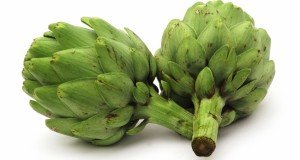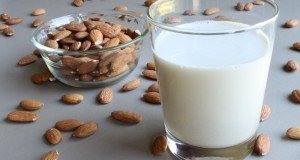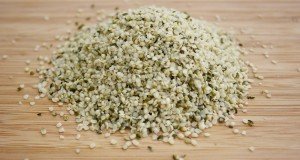9 natural antifungal remedies to eliminate candida overgrowth
(NaturalHealth365) Candida albicans, the most common type of yeast that causes infection in humans, is actually a type of fungus. Although it normally exists in small quantities in the mouth and intestines, an uncontrolled candida overgrowth can cause a wide range of symptoms, including mood swings, “leaky gut,” brain fog and depression. (keep reading for some great antifungal remedies)
In many cases, candida overgrowth can be addressed with lifestyle changes, such as avoiding certain foods – including processed sugar, refined flour and alcohol – embarking on a cleansing diet, and taking probiotics to re-establish a healthy balance of bacteria in the intestinal tract.
Antifungal remedies designed to protect your life
The nine natural antifungals (below) can help reinforce the effects of proper diet and probiotics, reduce candida cells, and help restore your health. For maximum benefit, you can try two or three of them together. However, in order to avoid uncomfortable “die-off” reactions that occur as the antifungals take effect, it is best to proceed slowly at first.
One word of caution: If you suspect you have a serious fungal condition, you should consult a knowledgeable naturopathic practitioner – and always get the “go-ahead” before trying these natural antifungals.
Caprylic acid: Coconut oil to the rescue
Caprylic acid is probably the “gold standard” of natural candida treatment. This beneficial fatty acid has been clinically proven to kill candida albicans – while helping to restore natural stomach acidity. For maximum benefit, you can obtain your caprylic acid in the form of coconut oil, which also contains the natural antifungals lauric acid and capric acid.
Many natural healers recommend working your way up to 5 tablespoons a day, starting with a smaller amount to avoid die-off reactions. If coconut oil is not practical for you, caprylic acid is commercially available in gel capsules, to be taken twice a day with meals.
Grapefruit seed extract: Beat candida with bioflavonoids
Grapefruit seed is a potent antifungal agent that is also packed with bioflavonoids and antioxidants. It not only attacks candida by breaking down yeast cell walls, but also enhances the immune system and helps to repair damaged liver cells.
In one study, grapefruit seed extract outperformed 30 different antibiotics and 18 fungicides – quite an impressive feat. However, as candida albicans has shown an ability to adapt to this extract, it should be combined with other natural antifungals.
GSE is sold in tablet and liquid form. Hint: if taking the liquid concentrate, dilute it well, using about 10 drops of GSE to at least 8 ounces of water. This powerful antifungal can interact with prescription medicines, so check with your doctor before using it.
Oil of cloves: Enlist the power of eugenol
Oil of cloves is another effective antiseptic and antifungal that quickly kills candida cells while simultaneously boosting the immune system. Its active ingredient, a compound called eugenol, gives cloves their spicy flavor – and their antifungal powers.
Make a tea from clove oil by adding 15 to 30 drops of the oil to warm water; you can drink the tea up to three times daily. If you find the taste objectionable, you can flavor it with a few drops of cinnamon essential oil.
Cinnamon offers sweet relief from candida
Like cloves, cinnamon bark powder contains eugenol, and is a potent antifungal. Studies show that even multidrug-resistant varieties of candida yeast are susceptible to cinnamon.
There are two types of cinnamon – Cinnamomum cassia – or Cassia cinnamon – and Cinnamomum zelanicum, or “true cinnamon.” Both are effective at inhibiting candida, but the more common “true cinnamon,” the type usually offered at grocery stores, performed slightly better than Cassia cinnamon in laboratory studies.
To make cinnamon tea, simply boil a few cinnamon sticks in water for 30 minutes, then let them steep until the mixture is cool enough to drink.
Take aim at candida with ajoene in garlic
Garlic contains a phytochemical called ajoene, which is produced by two other garlic constituents: allicin and allinase. In a 2009 study, ajoene from garlic was shown to be effective against 98.2 percent of all yeasts – including candida albicans.
If you choose to simply eat garlic to combat candida, you must mince it well to release the beneficial ajoene. Combine the minced garlic with water – then follow the mixture up with a tablespoon of coconut oil to reduce “stomach burn” from this powerful nutrient.
Natural healers often suggest two to four cloves a day of organic, fresh, minced garlic. Garlic is also available in gel tablets and oils. A note of caution: both fresh and freeze-dried garlic can cause a stinging sensation on the skin when handled, and can cause mild gastrointestinal side effects, headaches and allergic reactions.
Root out candida with ginger
Ginger root, another time-honored natural candida remedy, gets its antifungal powers from the presence of its active ingredients, shogaols and gingerol. In a study published in the American Journal of Applied Sciences, ginger extract was comparable to the prescription antifungal Nystatin in inhibiting the growth of candida.
You can make a yeast-fighting – and refreshing – ginger tea by grating a square-inch cube of fresh ginger root into 2 cups of boiling water. After boiling for 20 minutes, strain the tea, then add a squeeze of fresh lemon or lime.
Oregano oil: Packed with phenols
Oregano oil, which is rich in the plant compounds carvacrol and thymol, is highly antifungal, particularly against candida albicans cells, which it dehydrates and kills. Naturopathic healers advise using 1 to 3 drops in water twice daily – remember to use plenty of water to avoid a burning sensation in your mouth.
Bonus: as the Candida yeast doesn’t develop resistance to oregano oil, it won’t lose its effectiveness over time. Oregano oil also has preventive effects that can help you avoid a re-infestation of candida.
Cruciferous vegetables can combat candida
Cruciferous vegetables – such as broccoli, cabbage, kale and Brussels sprouts – are rich in isothiocyanates, which are highly potent antioxidant and disease-fighting compounds that target candida.
If you’re not a fan of broccoli or Brussels sprouts, don’t forget that flavorful arugula lettuce is also a cruciferous vegetable – and grants the same antifungal benefits. A daily arugula salad with a dressing made of coconut oil, lemon zest, honey and apple cider vinegar is a dietary antifungal superhero that can help deliver a knock-out punch to candida overgrowth.
Apple cider vinegar: Get an assist from enzymes
Apple cider vinegar – while not as active against candida yeast as other substances on the list – is known to contain enzymes that help break candida cell walls down, while creating a friendly environment for beneficial bacteria in the gut.
To help control candida overgrowth, natural healers usually recommend a tablespoon of raw, organic apple cider vinegar diluted in warm water three times a day.
References:
Natural Antifungals: Supplements & Herbs For Killing Candida
https://candidahub.com/Herbal-Cures/Herbal-Cinnamon-Yeast-Infection-Cure











